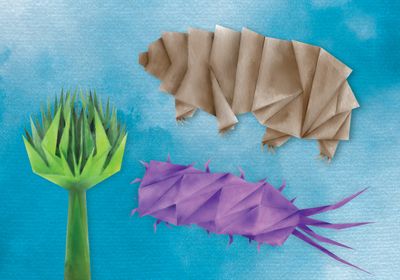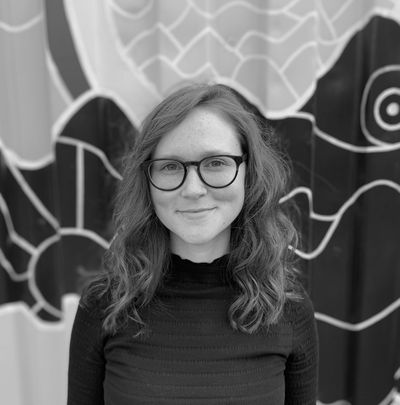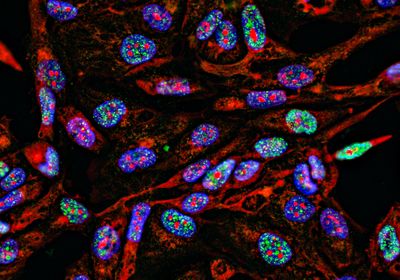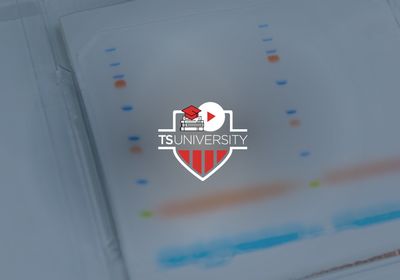ABOVE: © Ashleigh Campsall
In 2011, while waiting for his new lab to be built at Stanford University, bioengineer Manu Prakash traveled to labs around the world, including in his home country of India. When he came across limited or broken microscopes in several labs, Prakash was disappointed. “Almost two-thirds of all biological and life science insights and research work utilize microscopes, while very few people have access to microscopy as an infrastructure,” said Prakash. With a new purpose for his bioengineering knowledge, he set out to build an affordable multipurpose microscope.
“Science has a crisis associated with access and affordability,” said Prakash. A basic light microscope that costs at least $100 could be a big amount for small labs in developing countries or impractical for use outside of the lab. Inspired by pencils and ballpoint pens, the most accessible and utilized tools he could think of, Prakash set the price point for his microscope to be produced at a mere $1. The challenge that remained was to actually build it.
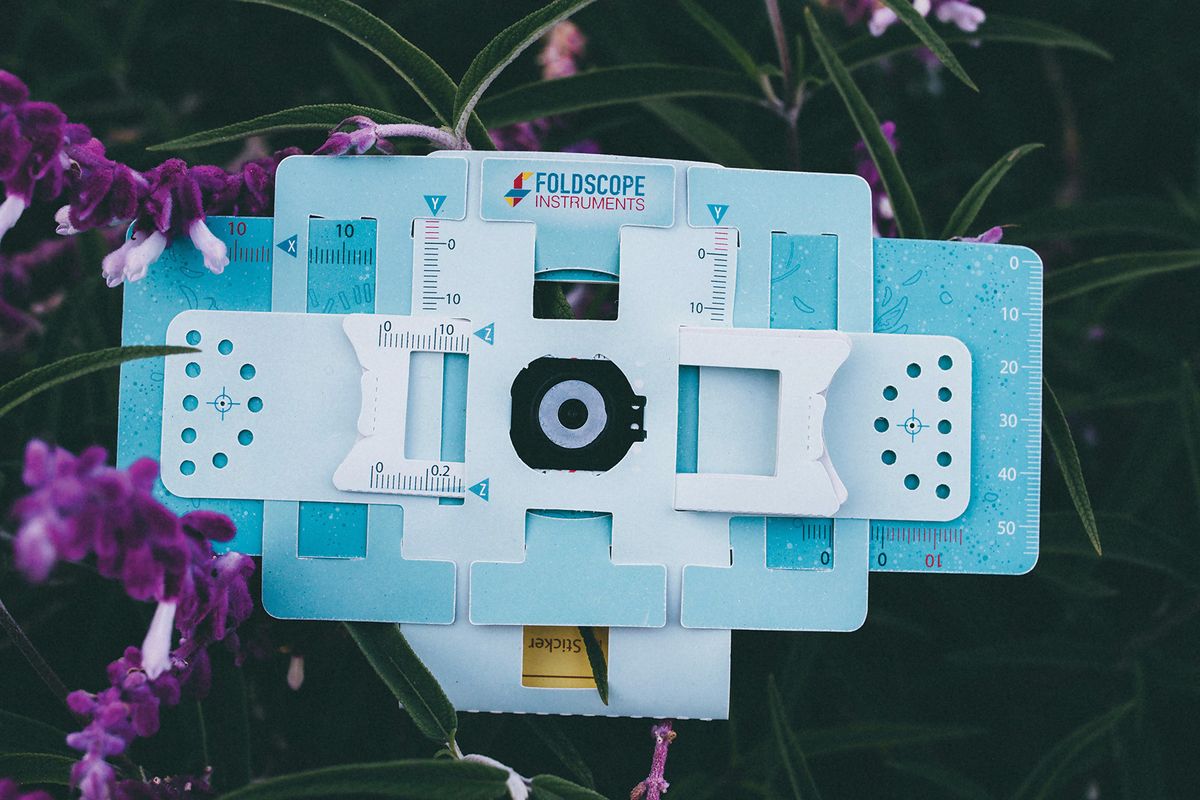
Kirigami microscopes take shape
Around this time Jim Cybulski, a mechanical engineer who is now president of Foldscope Instruments, Inc., joined Prakash’s lab as a graduate student. He teamed up with Prakash to design the $1 microscopes. “The first challenge was trying to get the same level of performance as a conventional microscope but at a very low cost,” said Cybulski.
To address cost, the team looked to flat manufacturing or printing microscopes. After throwing out what seemed like hundreds of failed ideas, they landed on the Foldscope, an optical microscope based on kirigami, a variation of origami that involves cutting along with folding.
The engineering duo had to consider several features and functions in their thrifty design, including the lens material, aperture, focus, and panning. Buried in the design is a hefty mathematical calculation on how to make ultrasmall lenses.1 “What is not obvious to people when they play with this is that there are optics the size of a grain of salt in it that enable all of this to be possible,” said Prakash.
Science has a crisis associated with access and affordability.
—Manu Prakash, Stanford University
The resulting Foldscope’s microscopic ball lens is made from borosilicate glass, a cheap yet effective material that fits into a small piece of plastic designed to provide a single optimal aperture. After placing a sample on a glass slide, a three-dimensional kirigami design feature allows users to toggle the lens to pan and zoom in on the sample using their thumbs. Light from the sun, a lamp, or light-emitting diode (LED), passes through the sample, aperture, and lens to reach the eye and magnify the sample. This pocket-sized inexpensive design achieves approximately two-micron resolution and 140X magnification. Using a magnetic coupler, users can attach the kirigami microscope to a phone camera to attain even greater magnification.
“Frugal science has the connotation in many people’s minds that somehow frugal also means low tech,” said Krishnaswamy VijayRaghavan, who was a developmental biologist at the National Center for Biological Sciences and former principal scientific advisor to the government of India. He was not involved with the development of the Foldscope. “What is admirable about [Prakash’s] approach is it might be frugal, but it’s extraordinarily complex science.”
After unveiling their technology in a publication in 2014, the team soon realized that they had another problem to solve. Prakash recalled an air of skepticism and confusion around what they were trying to do. To convince the scientific community of the Foldscope’s merit, they needed to get the kirigami microscope into people’s hands.
A microcosm of curiosity
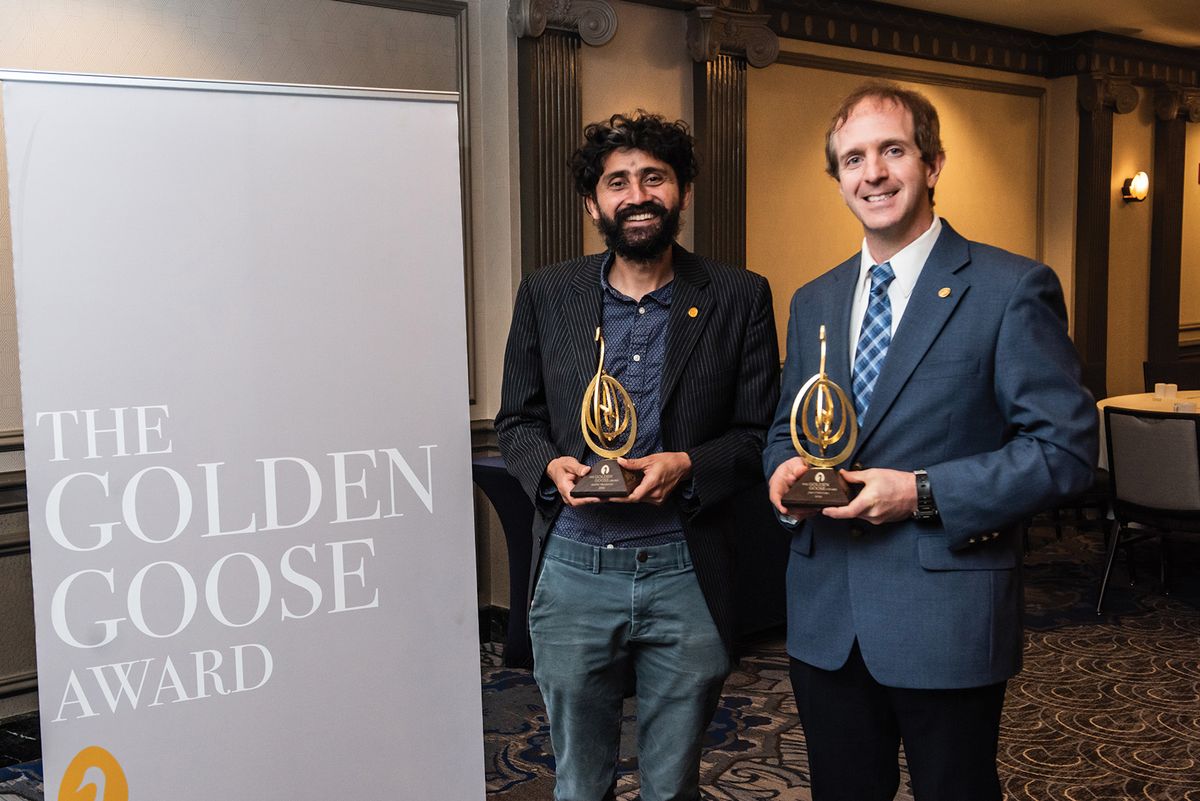
Prakash wanted to do more than build a tool. “Communities are far more powerful because tools will come and go,” said Prakash. His team planned to assemble 10,000 Foldscopes, but after a flood of applications poured in from around the globe, they overshot their goal. They shipped off 70,000 Foldscopes for free, no rules attached. “We were not asking anything of anyone. We were just sharing the tool and wanted people to be curious and explore,” said Prakash.
To provide a space for this growing community to flourish, the team created Microcosmos. “It’s a huge database that’s collected by our users almost like Wikipedia for the microscopic world,” said Cybulski.
By magnifying the world around them, Foldscope users have achieved a lot, including discovering a new strain of cyanobacteria from a drinking water pipeline in Pune, India and screening soil samples for microorganisms that produce the agricultural and medicinal enzyme naringinase.2,3 The Foldscope also serves as a platform for a harmful algal bloom monitoring program run by the Open Field Collective.
In the spirit of using Foldscope for curiosity, Prakash has made his own amazing discoveries. While on a vacation in Lake Tahoe with his kids, he peered through a Foldscope at a water sample from the lake when a cell he was examining seemingly disappeared right before his eyes. He took the sample back to the lab, cultured the cells, and made the discovery that cells can talk to each other using pressure waves.4
Although there are potential applications in diagnostics, animal health, agriculture, and public health, the Foldscope is primarily an educational tool. “When you get kids together, it’s stunning how much enthusiasm there is, and it just transforms the kids into questioning,” said VijayRaghavan. “It is a magnet for curiosity.”
Cybulski and Prakash officially launched the company Foldscope Instruments, Inc. in 2016, and they continue their quest to provide affordable, user friendly microscopes. The team recently launched a new and improved Foldscope 2.0. “Although we are very proud of where we are, we also know we have a long way to go,” said Prakash. “That is why this is the type of a project that is a lifetime goal, not just something that we do and put aside.”
References
- Cybulski JS, et al. Foldscope: Origami-based paper microscope. PLoS One. 2014;9(6):e98781.
- Nitnaware KM, et al. Whole-genome characterization and comparative genomics of a novel freshwater cyanobacteria species: Pseudanabaena punensis. Mol Phylogenet Evol. 2021;164:107272.
- Patil SV, et al. A novel screening method for potential naringinase-producing microorganisms. Biotechnol Appl Biochem. 2019;66(3):323-3277.
- Mathijssen AJTM, et al. Collective intercellular communication through ultra-fast hydrodynamic trigger waves. Nature. 2019;571:560-564.
